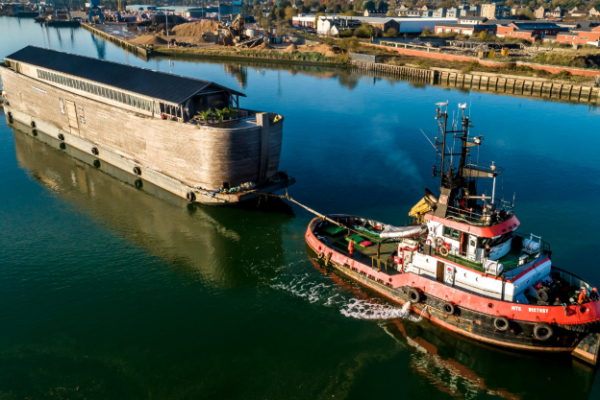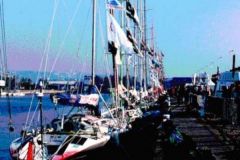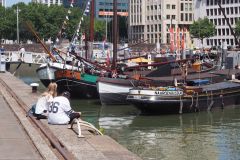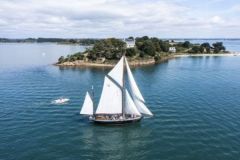The story of Johan Huibers' arches is the story of a Dutch builder's passion for the ocean, which led him to build two boats in succession, replicas of Noah's Ark. One half-scale, the other colossal. An atypical project, reflecting one man's determination to share educational and symbolic messages.
A first half-scale version
Johan Huibers, originally from the province of North Holland, grew up surrounded by water. His fascination with the ocean began in childhood.
The beginnings of Johan's half-scale Ark date back to 1992, when he began researching Noah's Ark with the idea of "recreating" it. After devoting most of his time to reading the Bible and studying reference works, he finally gave birth to the project of building an authentic "replica" of Noah's Ark, in accordance with the texts.
Between 2005 and 2007, Johan Huibers, with occasional help from his son and using modern tools, built the first version of the Ark in the river port of Schagen, 50 km north of Amsterdam. The Ark is 70 meters long, 9.5 meters wide and 13 meters high, and is sized to navigate the Dutch canals and locks.
It takes 20 weeks to saw the 1,200 FSC trees into beams and planks. The interior of the Ark is designed in pine, while the exterior is clad in Canadian red cedar. Construction cost 1 million euros. In 2007, Johan Huibers opened the doors of the Ark to visitors. After just a few months, the ship was towed through the canals and moored in 21 ports in the Netherlands.
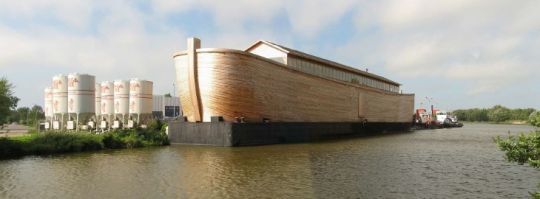
Johan Huibers sold the Ark to Dutch artist Aad Peters in 2010, seeing the opportunity to develop Europe's first floating biblical theme park.
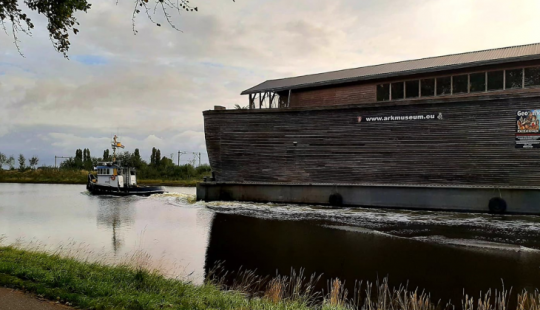
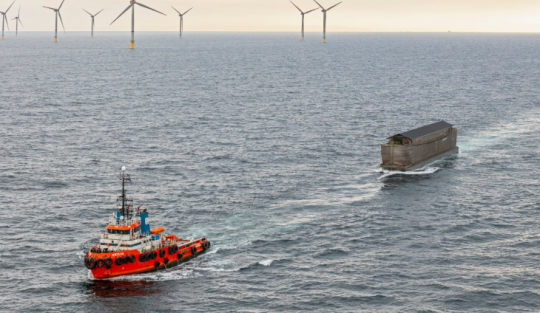
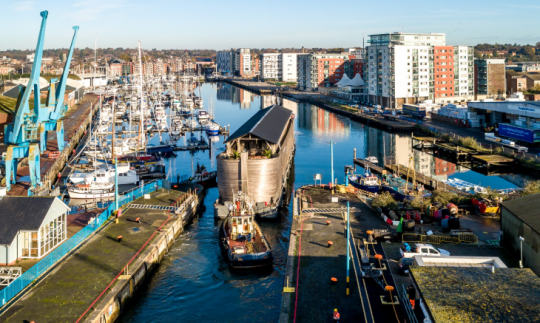
In the space of six months, with the collaboration of more than 50 workers and artists from all over the world, Peters fitted out the interior of the Ark, before finally sailing to Germany, Denmark and Norway. Today, this museum ship, the Arkmuseum is based in Lelystad, the Netherlands.

A second, more colossal version
From 2008 to 2013, he completed a larger project, dubbed Johan's Arch. The new arch is 119 meters long, 30 meters wide and 23 meters high. Since 2012, it has been moored in the Dutch town of Dordrecht on the River Meuse.
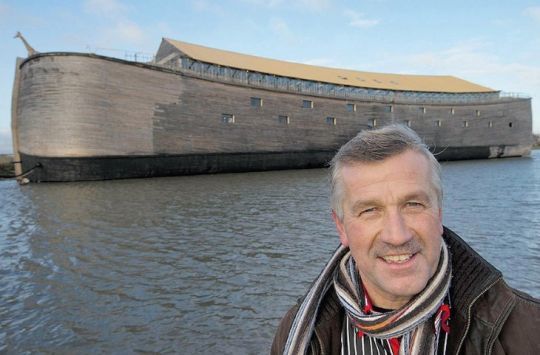
Divided into seven floors, it marks a significant expansion on the previous version. Huibers, accompanied by eight assistants, devoted four years to its construction.
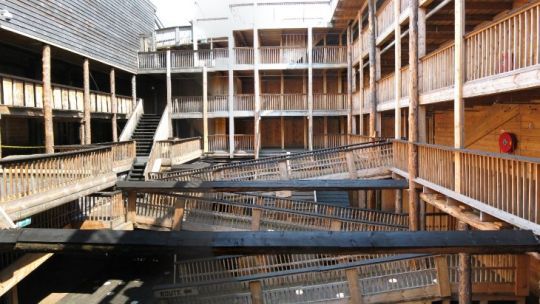
While the Bible suggests that Noah built his ark from Gopher wood, corresponding to cedar or cypress depending on the translation, Johan Huibert used American pine and cedar for the construction of his. An estimated 12,000 trees were needed for this ambitious project. Construction costs exceeded 4 million euros.
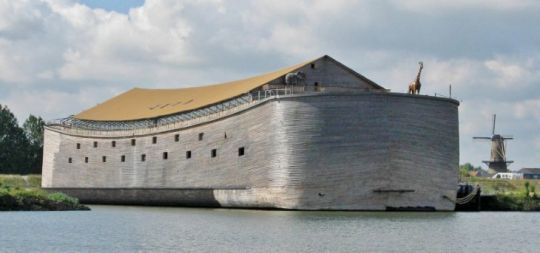
The boat now serves as a gigantic life-size exhibit on several levels. Visitors can discover a variety of life-size animal statues, as well as Bible stories and exhibits. The Ark also houses a restaurant and cinema.
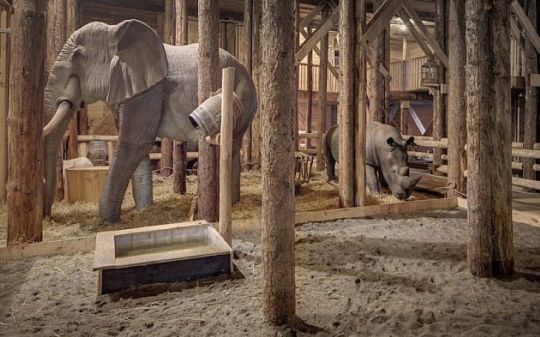
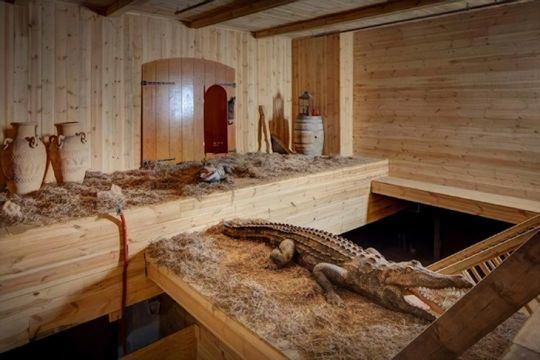
A truly seaworthy boat?
The wooden construction rests on a concealed floating steel platform made up of 21 LASH barges. Once freight containers, these LASH barges were towed or pushed like floating barges along inland waterways, while they were transported on large ships in open seas.
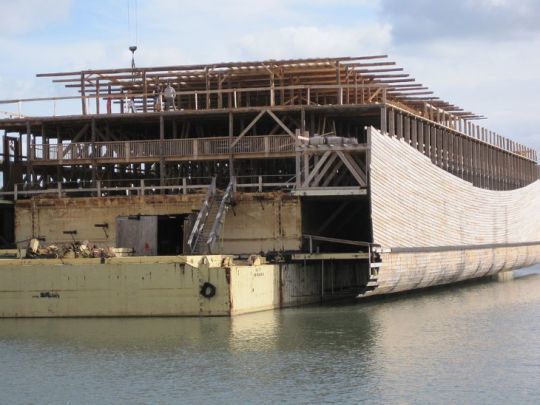

The Ark can be towed by tugs on rivers, but is not suitable for sailing. To cross oceans, it could be transported on a pontoon or transport ship.
Johan Huibers had always dreamed of taking the Ark to Israel, where it would find a special symbolism. To realize this project, he would have needed around 1.3 million dollars to finance the costs of transporting the Ark.
Raising awareness of rising water levels
Growing up in a country below sea level, whose people have been battling floods for over 1,000 years, has given Huibers a better understanding of the risks of rising waters than some. He himself was born five years after the North Sea flood of 1959, which claimed over 2,000 lives.
While Johan Huibers expresses his conviction about the rising waters coming from the mountains and the sea, he approaches the subject with a certain serenity. He stresses, however, that the Ark's primary objective is not to save lives. Eventually, who knows? Its true vocation is educational. It reminds us that our world is changing and will continue to change, impacted by factors such as global warming, rising sea levels and fires.

 /
/ 